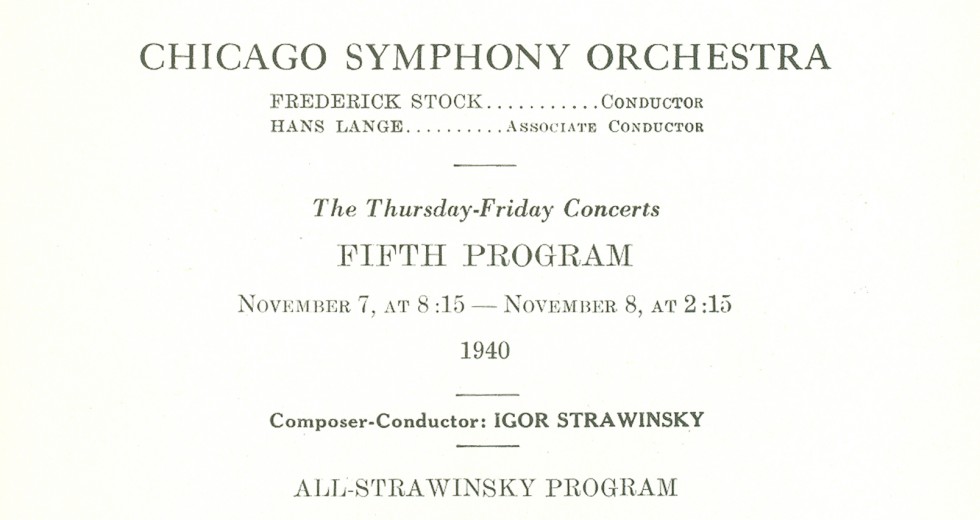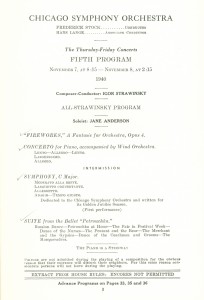
Following the success of his Dumbarton Oaks Concerto—composed in 1938 to celebrate the thirtieth wedding anniversary of Mr. and Mrs. Robert Woods Bliss—Igor Stravinsky was commissioned that same year by Mrs. Bliss, Mrs. John Alden Carpenter, and several of their friends to compose a work to celebrate the Chicago Symphony Orchestra’s fiftieth season.
According to Phillip Huscher, Stravinsky “decided to tackle the ‘standard’ by writing a symphony in C in the four orthodox movements—sonata-allegro, slow movement, scherzo, finale—scored for a Beethoven orchestra (throwing in the tuba for added measure). He did not foresee that this work would become, in effect, his American passport—the score that would accompany his move to this country.”
The composer himself was on hand on November 7 and 8, 1940, to lead the Chicago Symphony Orchestra in an entire evening of his music, including the world premiere of his Symphony in C. Edward Barry in the Chicago Tribune wrote, “In the course of the performance we caught ourselves muttering, ‘Ha! A major work!’ ” Robert Pollak in the Chicago Daily Times proclaimed that “Musical history is made at night and perhaps it was made last night at Orchestra Hall.” And Claudia Cassidy in the Journal of Commerce described the work as “both contemporary and timeless, autobiographical and impersonal. It has the lovely sense of form as much a part of all Stravinsky scores as indescribable richness of instrumentation is the signature of the finest. It is lyrical to the point of intoxication, and at the same time delicately, immaculately restrained.”

CSO cello Robert Smith, principal clarinet Clark Brody, principal harp Edward Druzinsky, and assistant concertmaster Victor Aitay look on as Columbia producer John McClure and Stravinsky review the Orpheus score on July 20, 1964.
Stravinsky was a frequent guest conductor, leading the Orchestra in concerts at Orchestra Hall, the Pabst Theater in Milwaukee, and at the Ravinia Festival between 1925 and 1965. In July 1964, he led the Orchestra in recording sessions of his Orpheus ballet for Columbia Records.
This article also appears here.
